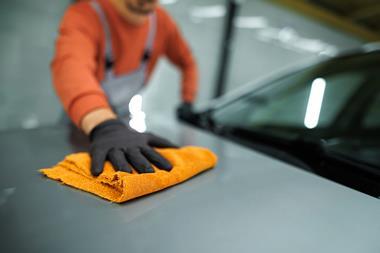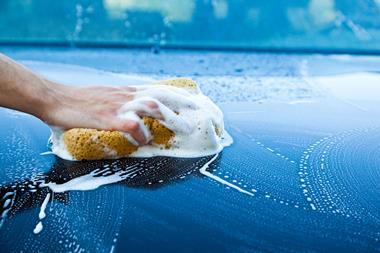Hundreds of forecourts have the same problem: a large and heavy piece of equipment taking up quite a lot of space in its own dedicated area which, although costly to install and maintain, has produced very decent profits for many years. But that was before a no-tech alternative sprang up causing the market for their particular service offering to collapse almost overnight. Today that once-expensive piece of equipment sits under-used (if used at all) and physically decaying.
Yes, we’re talking about the roll-over car wash; and infrastructure equipment and systems that go along with it. The reason why we’re calling it a problem is twofold. In the first place much of the equipment involved is now quite old. Many forecourts haven’t updated theirs since the 1990s the best part of 20 years. Even with regular use and proper maintenance, it would be reaching the end of its useful life in 2016. Some operators did try to ’mothball’ their installations when the demand dropped off, hoping that the hand car wash bubble would burst quite quickly and they could resume business as usual. But five or 10 years later they’re still waiting, and even where an attempt was made to keep the equipment in working order, it’s been a long time since the last maintenance contract was renewed. If by some chance they discovered any resurgent demand for automated washes in their area, there’s a very big doubt whether the existing installation would be capable of reliable, sustained, safe operation at least without some potentially expensive reconditioning.
Space issue
The second reason is more mundane. Many forecourts are physically crowded and expansion is difficult, if not impossible. Car wash bays themselves take up a defined space (typically around 30-35sq m) but in addition there’s often a lot more space required to be kept clear on the forecourt for a drive-through route. Back in the days when roll over washes were major profit centres, it made sense to utilise the limited space in such a way as to provide the greatest financial return. In some cases that was quite easy: existing, redundant, workshop or tyre bays were simply converted into car wash bays, albeit that the ’drive-through’ element may have taken additional usable space off the forecourt. Where this option wasn’t available, site owners and architects had to go to some extraordinary lengths in order to carve out a space for car washes that would satisfy local authority planners, fire officers, etc. The motivation was straightforward: to maximise the financial return per square foot of space: whether shop, car wash, parking or storage.
That same criterion is still relevant. Can you produce a better financial return by removing a dead car wash and using the space for expanding the shop, or providing more parking spaces on-site, creating pick-up points for internet shoppers, or even installing charging equipment for electric vehicles?
Some operators will ask ’Why do I need to do anything at all’? Fair enough, but then when they hear that their competitors are offering some new service on site they shouldn’t complain ’If only we had the space to do that’. Others may find that the decision can’t be deferred for ever. As mentioned earlier, the buildings and equipment are ageing; it may not be possible to keep them secure from the ravages of vandalism and/or weather. And if they become a danger to anyone on site, guess who’s going to be liable? Sooner or later the issue will need to be addressed.
if you can’t beat them
Of course, there are forecourt operators who’ve decided that if they can’t beat them, they’ll join the ranks of the hand car wash brigade and leave the roll-over unused. After all, it can be a convenient place to store all of those chemicals, buckets and sponges. Unfortunately that isn’t really an answer, at least in the longer term. It doesn’t address the problem of crumbling buildings and obsolete machinery. If anything, it can exacerbate the space constraints on site, since the hand wash is usually done outside the old roll-over wash ie using yet another part of the forecourt. And that’s before you consider the financial and legal aspects of offering a hand car wash.
Let’s assume that you do want to offer a hand car wash on your forecourt. You might choose to do it completely above board and employ three or four people to provide the service. As with any employees, you’ll need to carry out the appropriate checks on their employment eligibility and record the results. You’ll need to pay them the appropriate minimum/Living Wage rates and, when the time comes, bring them into your Auto Enrolment staff pension scheme. But at least that way you’ll avoid problems with HMRC, and your employer’s liability insurance should cover you for anything unfortunate that might happen on site during a car wash. All you have to do then is to work out how much to charge for each wash in order to make a profit, allowing for all of the costs you’re taking on.
Naturally some operators have chosen another route: renting out space on the forecourt to self-employed car wash teams. Easy. That needn’t mean anything illegal of course. They could be genuinely self employed and entitled to work in the UK. In which case all you need to feel safe is to make sure that your public and product liability insurance covers their presence and activity on your forecourt just in case they’ve forgotten to arrange their own.
Unfortunately life’s rarely that simple. There is still something of a question mark over what exactly constitutes ’self employment’. You could be deemed to be actually employing people if they’re working on your forecourt regularly, in which case you’ll still be liable for all of the checks and controls that you should have undertaken, not to mention potentially a lot of tax and NI contributions.
Perhaps it’s time to think again about what else you could do with that ’dead space’ on your forecourt?






























No comments yet